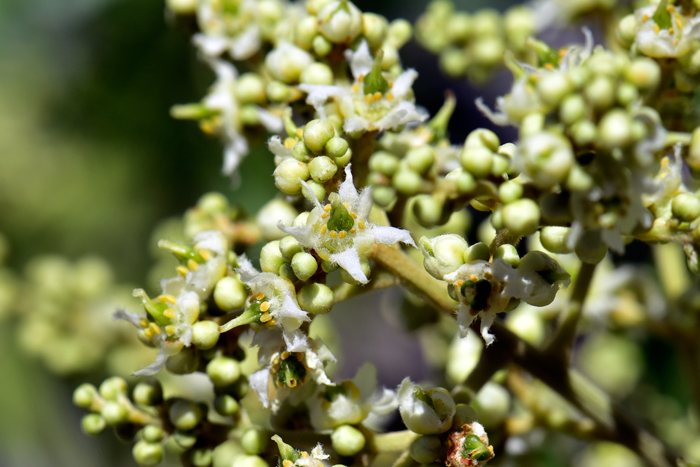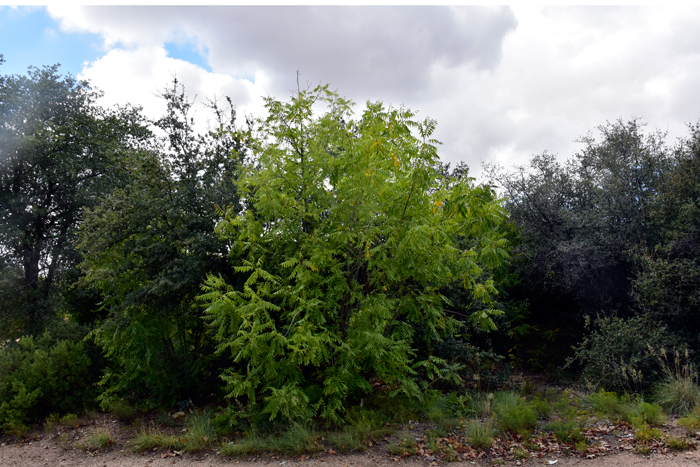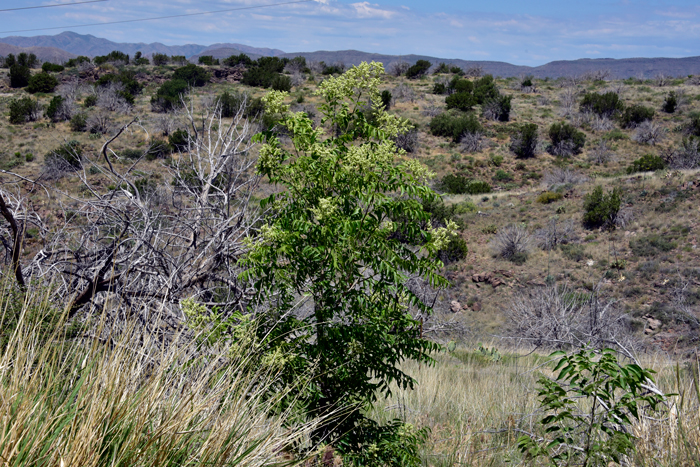Rhus glabra, Smooth Sumac




Scientific Name: Rhus glabra, Smooth Sumac
Common Name: Smooth Sumac
Also Called: Common Sumac, Rocky Mountain Sumac, Red Sumac, Scarlet Sumac, Western Sumac and White Sumac.
Family: Anacardiaceae, Sumac Family
Synonyms: (Rhus albida, Rhus borealis, Rhus elegantula, Rhus calophylla, Rhus glabra var. cismontana, Rhus glabra var. laciniata, Rhus glabra var. occidentalis)
Status: Native
Duration: Perennial
Size: 6 to 20 feet (2-7 m) tall
Growth Form: Tree or shrub; small trees or thicket-forming shrubs often from branched rhizomes; bark dark gray, twigs glaucous, lenticel, pinkish-gray.
Leaves: Green, dark green above, paler beneath, turn bright red in the fall, leaves alternate, deciduous; odd-pinnately compound, 13 to 19 or more foliolate, leaflet without petiolule (sessile), narrowly lanceolate to oblong .75 to 3 inches (20-80 mm) long, .4 to 1 inches (10-25 mm) wide, margins sub-entire to serrate, glabrous.
Flower Color: Yellowish greenish to creamy white, flowers small but somewhat showy; inflorescence a large terminal and branched panicle with a smooth stalk and tiny yellowish green flowers (thyrse); flowers numerous, dioecious, sepals greenish, petals cream colored; some plants with unisexual and bisexual flowers; fruit a small drupe with a single seed.
Flowering Season: May or June through July or August
Elevation: 5,000 to 7,000 feet (.94-1.3 m)
Habitat Preferences: Common in rich soils, waste places, fields, roadsides and margins or borders of woods, often in oak and ponderosa pine woodlands; According to USDA, Fire Effects Information System, Smooth Sumac is a climax indicator in a number of shrub-grassland communities.
Recorded Range: Smooth Sumac is found throughout much of Canada, most of the Untied States and southward to northeastern Mexico (Tamaulipas).
North America & US County Distribution Map for Rhus glabra.
U.S. Weed Information: In North America Rhus glabra can be weedy or invasive according to the following authoritative sources: Weeds of Nebraska and the Great Plains. Plants included here may become weedy or invasive.
Invasive/Noxious Weed Information: No information available.
Wetland Indicator: No information available.
Threatened/Endangered Information: No information available.
In the Southwestern United States: Arizona and Texas each have 7 species of genus, California has 5 species, Nevada has 2 species, New Mexico has 5 species and Utah has 3 species. All data approximate and subject to revision.
Comments: Smooth Sumac is found throughout most of North America and well into Mexico. It is believed to be the only shrub or tree species native to all 48 contiguous states. This species of Rhus is often planted as a landscape plant because of it interesting green color throughout the summer and colorful red fall foliage and berry-like fruits. In some areas this species large decorative arrangements because the seeds remaining on stalks for lengthly periods of time.Smooth Sumac is planted as a shelter-belt species and on depleted game ranges and is also used as "living" snow fences in areas where wildlife habitat improvement projects are objectives.
For a comprehensive thoroughly documented review of Rhus glabra see the USDA USFS Fire Effects Information System, or FEIS.
In Southwest Desert Flora also see; Kearney's Sumac, Rhus kearneyi, Littleleaf Sumac, Rhus microphylla, Skunkbush Sumac, Rhus trilobata var. trilobata, and Sugar Sumac, Rhus ovata.
The twigs and leaves are browsed by white-tail and mule deer year round but more importantly in the winter period when other browse species are scarce. And also the fruits which are persistent throughout the fall and winter provide a ready food source, again, when other food sources are not available. The showy flowers on Rhus glabra are visited regularly by birds such as hummingbirds and by nectar-feeding bats and insects. The palatable fruits are consumed by many species of birds and small mammals. For example, wild turkey, gray partridge and mourning dove feed on the fruits.
The species epithet "glabra" is from the Latin definition for glaber, glabra, glabrum and means smooth or hairless.
See complete listing of ethno-botanical uses at Native American Ethnobotany, University of Michigan, Dearborn.

